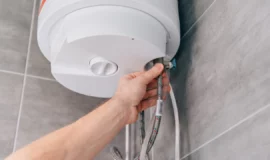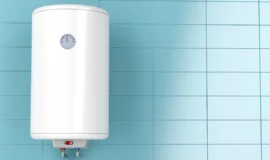
Did you know that the solar panel positioning can impact efficiency by 10% to 25%? As of March 2025, the solar net metering installations in Pakistan have crossed 280,000 users, but most home users rely on a fixed-tilt structure for the installations. This means that most of them are missing out on energy production. Here, I will guide you through the best angle for solar panels in Pakistan so you can calculate the optimal tilt angle as per your location.
First things first!
What is a Solar Panel Angle?
Before I show you the optimal solar panel direction and angle, you should be aware of what the solar panel angles are. The solar panel angle refers to the vertical angle at which it is installed. There are two things to consider in this regard: tilt angle and azimuth angle.
Difference Between Tilt Angle and Azimuth Angle
| Differences | Tilt Angle | Azimuth Angle |
| Definition | The vertical angle between the panel and the ground | The horizontal angle between the panel and true north |
| Purpose | Maximizes sunlight exposure based on sun’s height | Aligns panels to face the sun’s path (east-west direction) |
| Measured From | Horizontal ground surface | True north (geographical north) |
| Affects | How much sunlight hits the panel throughout the day | When sunlight hits the panel during the day |
| Ideal Value in Pakistan | Typically equal to the location’s latitude ± seasonal adjustment | Around 180° (facing south) for best results |
| Seasonal Adjustment | Yes, for better performance | Rarely adjusted once fixed |
Why Tilt Angle Matters
Tilt angle matters a lot when it comes to the production efficiency of the solar panels. Solar panels give the highest energy output when they are directly facing the sun (at 90 degrees). For this to happen, they should be tilted at the most appropriate angle as the sun moves higher in the summer and lower in the winter. If the solar panels don’t directly face the sunlight, their electricity production is reduced.

Pakistan receives a huge amount of solar radiation (5 to 7 kWh/m²/day on average across most regions), but due to a lack of awareness, many solar panels couldn’t produce energy efficiently. Some people get a steeper tilt angle, while others get a flatter angle, resulting in loss of production. It’s the reason why the tilt angle is just as important, in my opinion, as choosing the right solar panel system.
I know a friend who has got the solar panels installed at 45 degrees in Lahore due to this lack of awareness. This angle might be appropriate for winter but not for summer.
So, if you don’t want to be in a situation like this, let’s see how to calculate the optimal solar panel tilt angle.
Calculate Solar Panel Tilt Angle
The ideal tilt angle for solar panels changes as per the seasons. There is a general rule of thumb for calculating the solar panel angle. The best angles for solar panels are:
- For Summer: latitude – 15°
- For Winter: latitude + 15°
- Year-round angle = your latitude (or ± 5°)
The best tilt angle is calculated by adding 15° to the latitude of your location in winter and subtracting 15° from the latitude in summer.
Example: If you live in Lahore, the latitude is 31.5° N. So, the best tilt angle for summer, winter, and all year round (if you want a fixed structure) will be:
- For Summer: 17°
- For Winter: 47°
- Year-round angle = 30°
Here are the optimal tilt angles for some Pakistani cities:
| Cities | Latitude | Tilt Angle in Summer | Tilt Angle in Winter | Tilt Angle Year-Round |
| Karachi | 24.9° | 10° | 40° | 24° |
| Lahore | 31.5° | 17° | 47° | 30° |
| Faisalabad | 31.5° | 16° | 46° | 30° |
| Rawalpindi | 33.6° | 19° | 49° | 32° |
| Gujranwala | 32.2° | 17° | 47° | 31° |
| Peshawar | 34.0° | 19° | 49° | 33° |
| Multan | 30.2° | 15° | 45° | 29° |
| Hyderabad | 25.4° | 10° | 40° | 24° |
| Islamabad | 33.7° | 19° | 49v | 32° |
| Quetta | 30.2° | 15° | 45° | 29° |
Keep in mind that these values are approximate and can vary based on multiple factors.
Fixed vs Adjustable Tilt
Now we know that the tilt angle needs to be adjusted in summer and winter, but how is it possible when most solar panel structures in Pakistan are fixed? Well, when choosing the solar panel installation service providers, you can ask them to make an adjustable structure so you can change the tilt angle of solar panels in according to the seasons.
- Fixed Structure: Less expensive and less efficient
- Adjustable Structure: Expensive but better efficiency
Tips to Improve Solar Efficiency
Did you know that there are some other ways to improve the efficiency of the solar panels than choosing the best angle? Here are some of the tips from industry experts:
- Clean panels regularly
- Hire a qualified solar expert to align properly & build the suitable structure
- Consider solar tracking if budget allows
- Choose high-quality wiring and solar inverter
Moreover, selecting the best solar battery is also important to store most of the electricity produced by the panels. Also, it is important that you choose the right solar panel system type (on-grid, off-grid, and hybrid) so the energy produced is not lost.
Conclusion
The importance of choosing the best angle for solar panels is significant, as many studies have proven it to improve the production efficiency. This guide has provided all the details you need to know when choosing the optimal tilt angle for solar panels in Pakistan as per the location.
If you need any more information regarding solar panels, ask us in the comment section below.
The ideal angle can vary depending on the city and season. The ideal year-round tilt angle generally ranges between 25° and 35° in Pakistan, based on latitude and seasonal sun movement.
Yes, adjusting the angle twice a year is a good practice to get optimal energy production. It’s steeper in winter and flatter in summer.
Correct tilt angle maximizes sunlight absorption in the solar panel, which boosts energy production and system efficiency.
Yes, if you need a fixed angle, it should be equal to your location’s latitude (± 5 degrees), which is a good compromise for year-round performance.
The positioning of solar panel (as per tilt angle) can impact the energy efficiency by 10% to 25%








Leave a Reply